Back in 2020 Cheeky Hong Kong based Nons gave us one of the most fantastically innovative camera of the past 10 years with the original SL42. An Instax mini shooting SLR that could use most manual focus 35mm SLR lenses ever made. But it was seriously flawed.
But they’re back with the Mark II. And they’ve almost completely sorted it out giving us one glorious instant shooter.
I’d opted in a recent Kickstarter to get my Mark 1 traded in for this. The Mark II arrived this week. These images are my first 3 instax mini packs through and you’ll see I’m still getting use to this and digitalising the images (sorry struggling to get the them as sharp as they appear).
2020 – Perhaps not the best time to launch
Last year the world was kinda upside down with the impact of COVID, the aftermath of George Floyd’s murder, the bushfires, murder hornets, Brexit and an election someplace.
But over in analogue photography land things were actually more upbeat with several new cameras, films and other good news stories.
And for me the big news was the Nons SL42 despite it’s flaws
How Nons tore up the copy book
The Nons Mk I was a massive step for analogue photography.
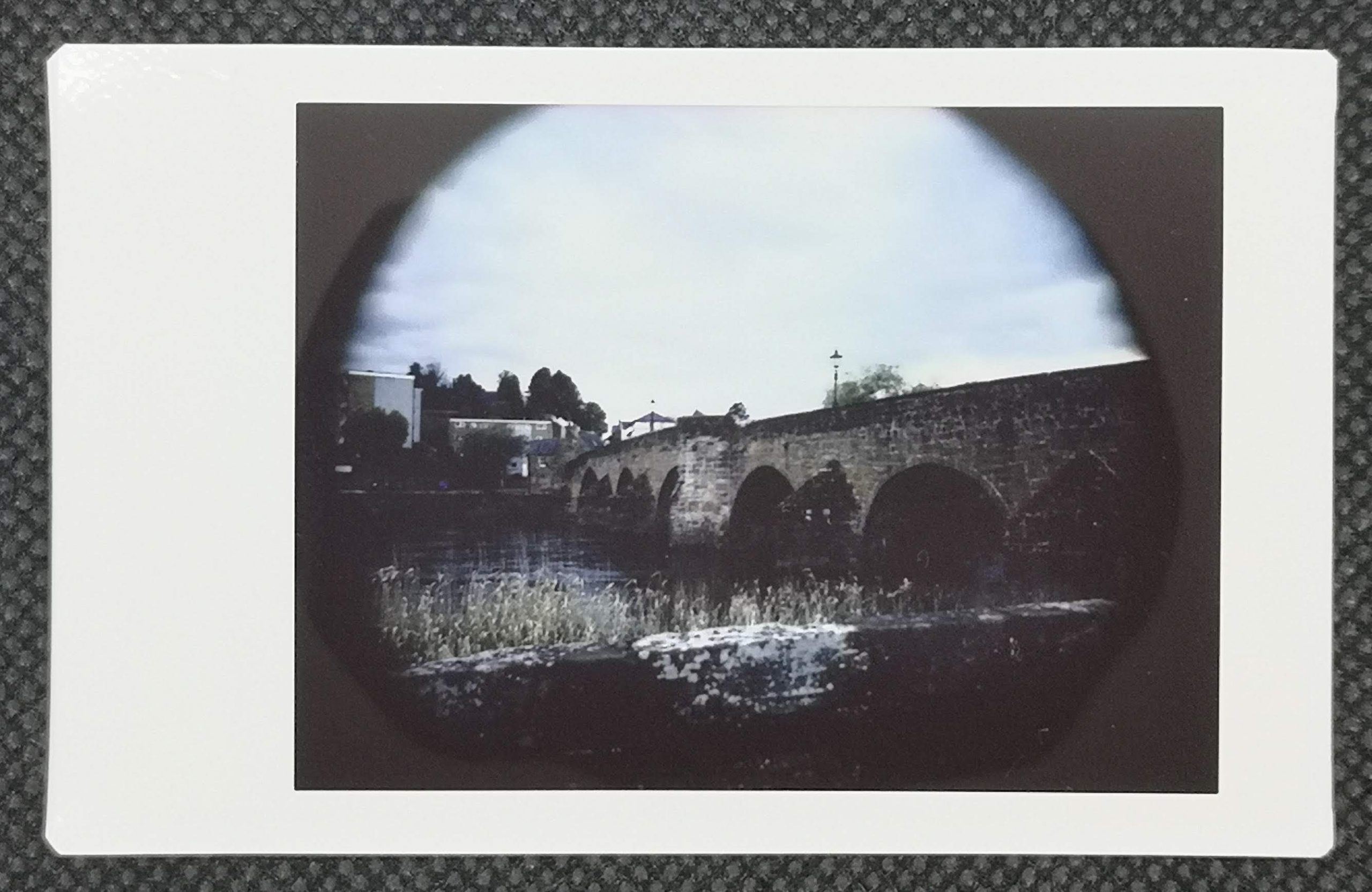
Let’s be frank since the noughties almost any new film camera has been pretty basic. Even the notable exceptions to this are really re-inventions of classics. 2014 Leica M-A (typ 127) may be the one of the world best film camera but in essence it’s mechanical only version of the earlier M series, Lomography’s 2011 LC-A wide is just a wide angled LC_A+. And arguably the most revolutionary roll film camera of the decade – the 2014 LC-A 120 was a glorious medium format version of the LC-A+.
But over instant land, things have been much more upbeat.
Here we’ve not been short of more technically complicated cameras. Fujifilm churn out newer automated zone focus models every year. Lomography offer interchangeable lens viewfinders with some manual exposure control for all 3 instax format. And Mint have given us instax TLRs and Rangefinders.
But Nons took the format & Spinal Tapped it up to 11
Brilliant but Flawed – The Original Nons SL42
The Mark 1’s importance is not as a brilliant camera. However it was such a massive leap forward for analogue camera production in 2020.
The NONS SL42 was the first new proper SLR in production since the noughties (sorry Lomography Konstructor). Turning up just after Nikon announces the demises of the F6, (the highwater mark for film cameras). It may have been plasticky and basic with external metering. But it kinda worked in a flawed fashion.
Those flws were quite sad given the concept. The viewfinder was just awful mainly due to focus screen. It could go through a set of top branded batteries in just one instax mini cartridge. And the shutter speed topped out at 1/250 which was a problems. Instax is a 800 ISO film with the dynamic range only marginal better than Britain’s 2021 Eurovision entry’s score. I also couldn’t get the flash circuit to work but as we’ll see that might have just been me
As the Mk1 used 35mm lens geared for a standard 35mm frame (36×24 mm) not the 62×46mm you get a marked vignette effect on the image. Was less of an issue for me but Nons planned to offer a solution
Enter the Nons SL42 Mark II
I’m pleased to say 2 out of the 3 big issues have been fixed and the remaining one is less of a problem. But you wouldn’t notice any difference at first glance
The Mark II looks just the same as the Mark I except on the base.
Both cameras look a bit like comedy prop cameras – looking like oversized plastic SLR. In fact they are just that in a 2 tone Silver/Black style with much of the black area being covered with a soft black leatherette. The camera sits between the sized of a big metl 35mm like my Nikkormat FTn and medium format SLR of the Pentacon Six style. The body is quite wide and surprisingly heavy although it doesn’t feel unbalanced.
The camera has hotshoe, tripod, cable point (mines was hidden beneath the quite nice screw in shutter button) but no timer. There are metal strap lugs.
The Mark II comes bundled with the Nons Field Extender (NFE). This is essentially a 3 coated element extension tube. This pushes the lens out so you get a bigger image circle. So you get less cropped final images. Essentially this is almost like mounting a full frame lens on a APS dSLR. So you get a 1.8 lens multiplication/crop factor effect (my 50mm becomes a 90mm)
Overall the construction is quite good for a plastic body. There’s not much creak. It has a passive Canon EF mount (more on that later) which is metal. The weak point of the design is also it’s most innovative.
Shutter Design
The camera uses the same shutter & mirror mechanism as the Mk I. It is totally unique compared to any other SLR I’ve used.
Ever since Dresden Ihagee gave us the first production 35mm SLR, the prevailing fashion has been to use a focal plane shutter.
But both the SL42 models use a leaf shutter arrangement that sits between the lens mount and the mirror. That’s not unheard of – there was a vogue for fixed lens SLRs in the 1950’s like many of the Nikon Nikkorette models.
But what is really unique is the mirror. In a conventional SLR when you depress the shutter button, the mirror swings up out of the way and then the shutter opens and closes
With both SL42 models the shutter first closes, then the whole mirror support slides to the side before the shutter opens to take the shot. Recocking actually mechanically moves the mirror support back into postion allowing the shutter to re open for focusing. This involves dragging the crude metal strip along the front of the camera. I’m not sure this will be that durable and unlike my 1960’s Exa 500’s cloth shutter, I suspect will not survive 60 years of use.
My first Mk 1 mirror jammed when cocking. Nons quickly replaced and my second one was working fine until it traded it back in for the Mark II. I think I was unlucky and you do get a year’s warranty. But I think wear in longer run may be an issue.

The camera offers a range of shutter speeds from 1 sec to 1/250 plus Bulb. the top speed hasn’t changed and means if you’re going to use the average 50mm prime lens in daylight ND filters will be required. But the good news is another improvement helps.
Goodness they really sorted the viewfinder
The big news is they have really improved the viewfinder & focus screen. It is a massive improvement and now useable. You still have a simple Fresnel screen but it works. Nons told me they were solving the problem by switching to a pentaprism from the MK 1’s pentamirror. I thought the issue was more the shocking screen. But whatever they’ve done, it’s a massive improvement.

The Pentaprism at least makes things much brighter and this is hady with the low top shutter speed. You can now load us a ND filter with ease. This was the case with this lowlight image captured with a ND8 filter on.
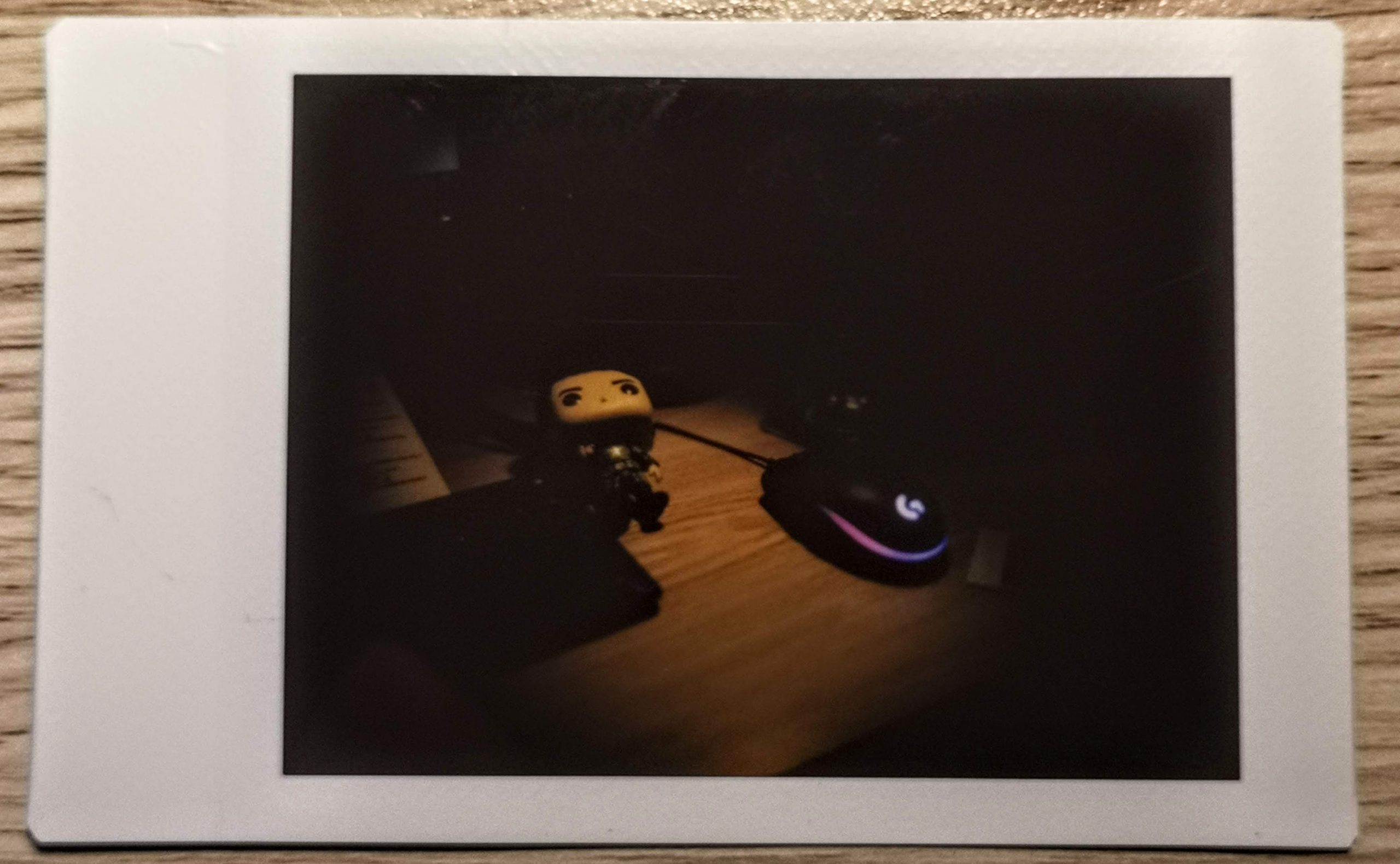
The area of coverage with just a lens mounted is about 80%. Not awful but not great. Clearly the viewfinder is set up for that. But weh you shoot with the NFE on you are markedly expanding the frame out and the viewfinder doesn’t compensate for this so you see only around the 1/4 of the final image

In the future it would be nice to get a more advanced focusing screen. However as much as I’d like to see a microprism collar around a split focus aid I can live with this screen. It works
My camera also came with a clip on square plastic alternative eyepiece. The point of this wasn’t clear as it was just plastic but I did find the rubber eyepiece of my Nikon F65 (N65) fits this and I suspect other rubber eye peices will too (but not the 2 Canon EOS cups I tried)
Battery Overhauled
The one obvious difference on the body is on the base.
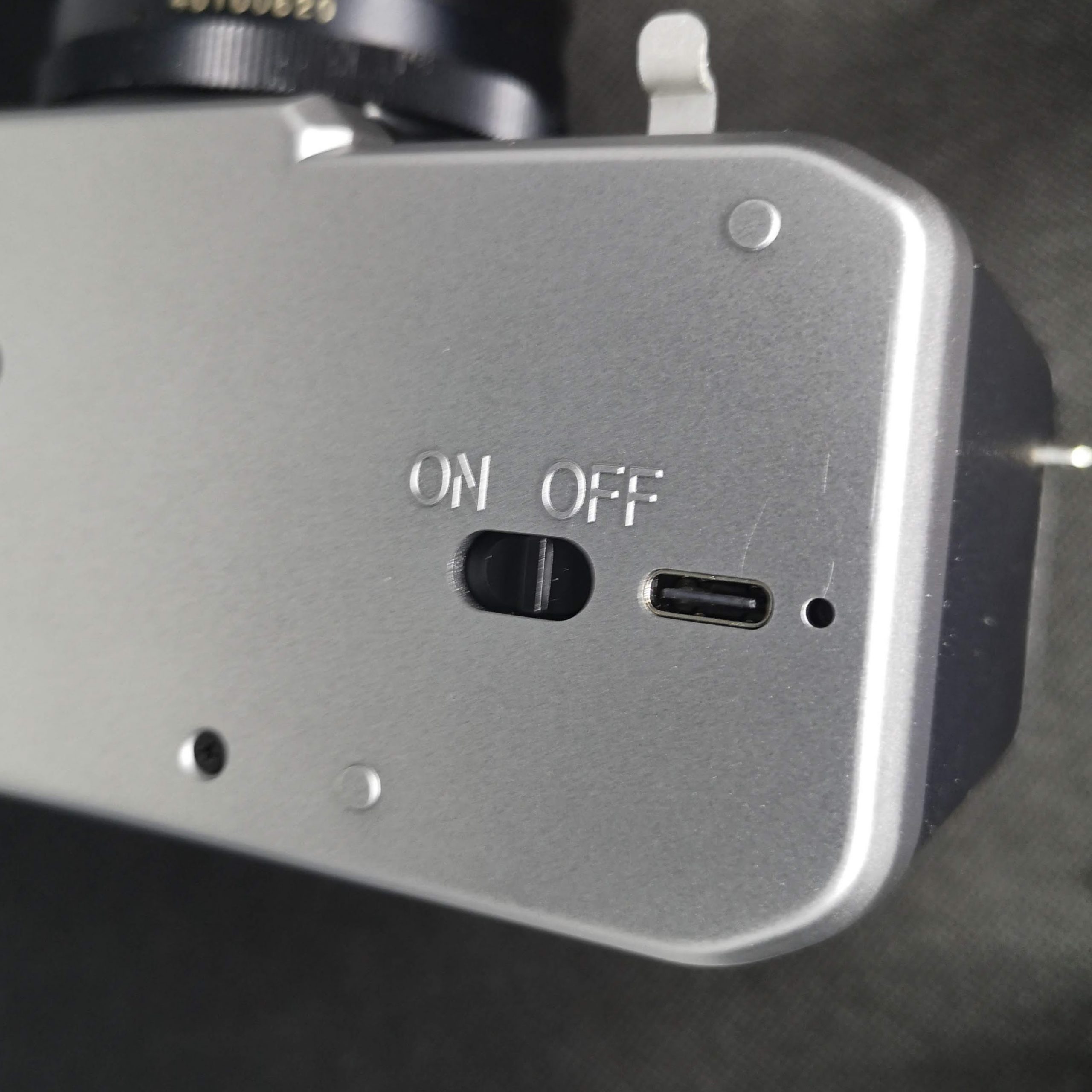
Gone is the battery compartment and in comes a on -off switch and USB-C charge point. The camera now has a Panasonic rechargeable 3200mAh battery. Out of the box it showed about 75% charge and without charging I shot over 2 packs with no issues. I actually decided to charge just in case mid 3rd pack in moment of stupidity as I have no realistic idea of battery life . That said it managed a 2 1/2 packs from 75% and was still showed over 50% charge.
it needs a 5A charger to get the best out of it but even a weedier unit will eventually charge it. A USB-C cable was provided in box. In the the long term a sealed battery is potentially an issue but given Nons has gone fror a standard battery it might be swappable in repair with enough nounce.
The NFE
The Nous Format Extender (NFE) is completely new for the mark II although Nons do sell it for Mk 1 users if they wish to upgrade. It’s of a similar build quality but perhaps without as much design love. It just feels cheaper and I found the body to NFE plate didn’t lock neatly as my lens adaptors did . it tens to go past the locking pin but if you watch you can see this popping up on mounting and if you pause it will be secure.
Using the NFE affects the lens aperture so my 50mm lens when set at f/2 (50/25= f/2) become actually nearer f/4 at that setting when mounted on the NFE (90/25= f/3.6). As we see the metering can be adjusted to compensate.
Metering
The core metering system is unchanged. The camera has single metering point on the front of the camera by the nameplate. This coupled to the shutter speed dial and shows a suggested aperture to match the shutter speed on a small panel beside the shutter speed dial. It also shows the film count and new on the Mark II can be set for use with or without the NFE in use.
That’s done by depressing the film advance button 4 times in quick succession. The manual recommends doing that unloaded and by bitter experience they’re right. It is far to easy to cause an instax sheet to eject. If you want to swap the NFE in & out mid pack you’re best manually compensating.
Some of you will be groaning at this but lets be frank before the late 60’s many SLR were unmetered or had external metering. KMZ were still selling the Zenit EM into the mid 80’s with it’s uncoupled selenium metering.
Flash Response
I was able to shoot flash with this but not without trouble. I mounted some vintage units and got nothing. But my Nikon SB-600 in manual mode worked although it’s gonna take some time to work out the best settings (I confess I tend to leave this on I-TTL with my Nikon bodies).
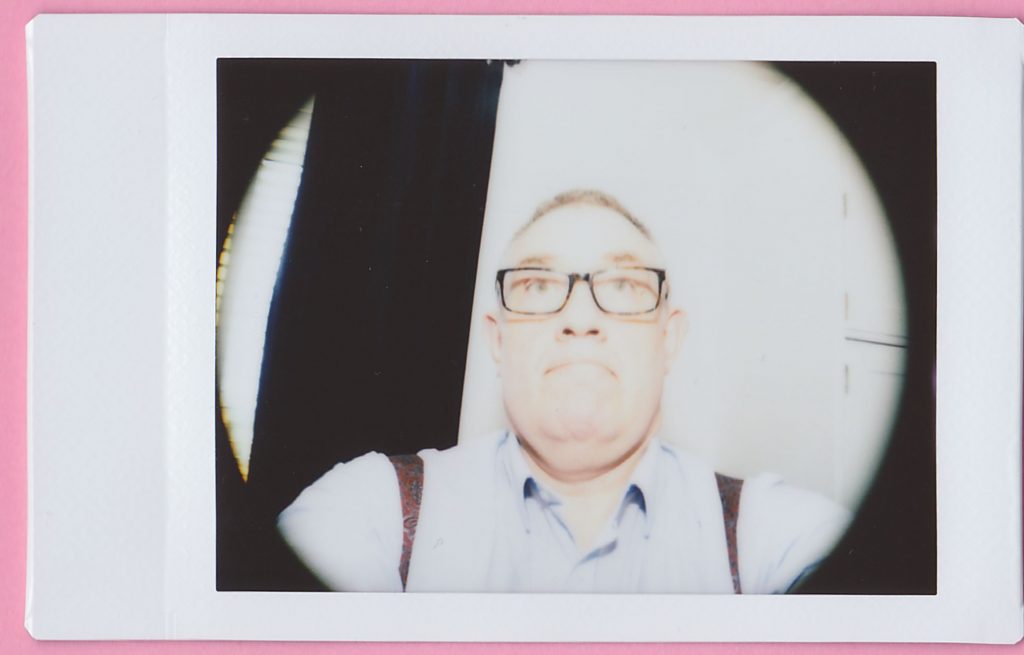
Now the manual says to use flash in manual mode. What it doesn’t tell you is that flash needs to be modern . I’m pretty sure I tested the Mk 1 with the SB-600 in manual and got Nada but now I can’t be sure. It would be helpful if Nons could be clearer what flash you should use but it looks like more modern low voltage circuitry units in manual should work.
Sync is now at 1/250 – a plus of the leaf shutter.
Lens Support
What the Mk 1 got right was the lens mount and they thankfully haven’t changed it. The Canon EF mount might seem an odd choice – it was developed for fully electronically controlled AF lenses. In fact as the mount is passive, you can’t meaningfully use a EF lens with this camera. But it is a sage one to use.
The EF mount has the largest 35mm SLR mount diameters in the business at 54mm. This means you get a host of adaptors for the EF mount pretty much allowing you to use almost any 35mm SLR mount format from Leica R to Nikon F to Pentax K to Exa to Olympus OM and so on as well as our old friend the M42.
The camera uses the same Flange focal distance (FFD – the lens mount to film plane) of a Canon EF camera at 44mm. This is important as it is shorter or the same as most other makes which means you’ll not need optical correction for many lens mounts (wikipedia has adjustable handy table).
The lenses with a smaller FFD may struggle to focus to infinity. These include some Canon manual focus lenses and Konica manual focus lenses. However some adaptors have compensating lenses for this.
Because of this you don’t get rangefinder to EF adaptors but you do get adaptors for some medium format camera lenses (notably Pentacon 6 and Hasselblad).
You may need to adjust aperture values if the FFD differences are quit large but in most cases it very little.
Word of Warning to Nikon users – Nikon F to other mount adaptors are the stuff of nightmares to get off Nikkor glass. This is no exception. They tend to stick fast once engaged. I’d recommend not using any plens witha plastic mount (tore up the base plate on a AF-D G lens with a m 4/3 adaptor) and spend some money on branded adaptor not a cheap one.
Using the Mark II
Pretty much the same as the Markk 1.
Click open the latch and insert the Instax Mini pack. Worth doing with the meter turned on as this seems to register and reset. The shutter and film eject remain separate. You need to press and hold the button on the side to eject. The shutter requires cocking between each shots and this resets the mirror to position. This is done by sliding the crude lever on the front below the lens until you here a soft click.
To Shoot make sure the camera is powered on. you can’t eject shots without it. The simple meter is coupled to the shutter speed dial and shows a suggested recommend f -stop to match the shutter speed.
You’ll likely then focus with the lens wide – as discussed this is a breeze with the viewfinder and screen. and then stop down. There is a slight delay between the depress of the shutter and the shot- the click you here is the mirror moving not the shutter.
Results
Blimey they really improved this with the viewfinder. My digitalised images don’t do this justice but things were pretty sharp for the conditions.

I do think things were a little softer with the NFE – That’s not a surprise and it is by no means awful but adding 3 elements on to a crafted lens was always going to soften things and I think I can see some soft aberrations. For may of you on the plus side, you certainly get a lost less vignetting. The NFE images have a LC-A level of vignetting compared to the circular images without. I prefer the latter but I get many of you will be happy to make the other compromise
With both you obviously get softer nearer the edges of the visible frame – these were not lenses designed to be shot for these formats.
I tested the meter against my Reveni labs meter. In simple lighting indoors it gave broadly similar results and in bright conditions without a lot of sky or back light much the same. But It tended to markedly over read for the sky especially in lower light conditions meaning it tends to under expose in these conditions. and this is what I found in practice. I have to say my Fujifilm SQ6 tends to do the same.
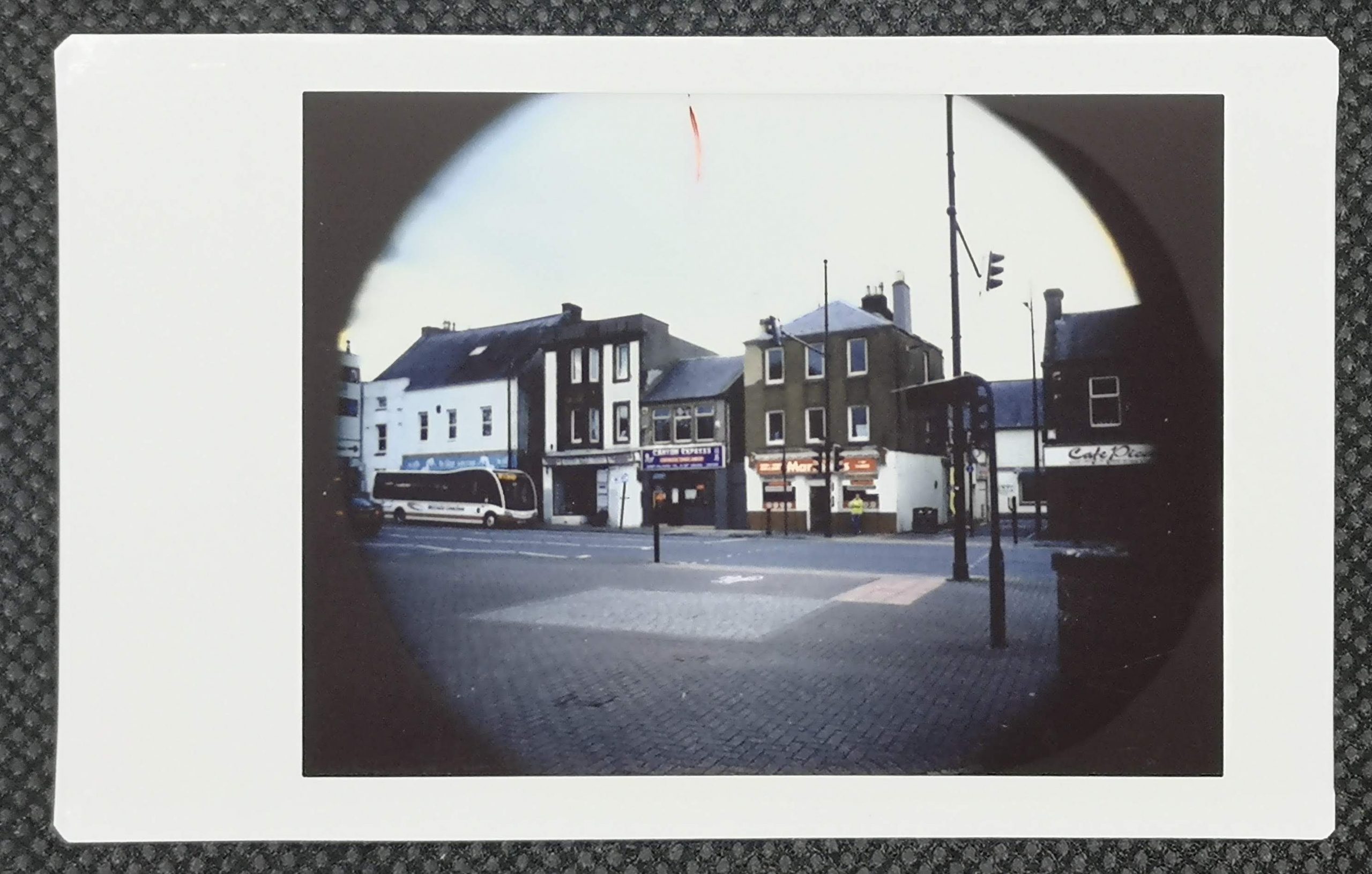
I’ll level other optic discussions alone here. That’s dependant on the lens you use and instax film’s limitations. Instax 800ISO film has crap dynamic range and is best shot in good light as it gets pretty blue in low light.
Alternatives & Cost
Nons are selling the Mark II for $449USD before postage with the NFE bundled (that’s about £316GBP at the time of typing). this equates well to the cost of the Lomography LC-A 120 (£339GBP) another brilliant but plasticky new camera.
Revolutionary as this is it has immediate rivals. Both Polaroid and Mint sell Refurbed Polaroid SX-70 SLRs for around the same amount. You do get a bigger format with no vignetting. Of course polaroid works out twice the price per shot and you can’t change the lens. Mint also sell enhanced versions – the SLR670 models. But these are twice the cost and you still can’t change the lens. Of course you can take a chance with a second hand SX-70 of the likes of the ‘bay but buyer beware.
Mint also offer the InstantFlex TL70 2.0 (£329GBP) TLR and InstantKon RF70_auto (£649GBP) rangefinder which use Instax (Mini and wide respectively). Neither offer lens changeability, and my sense is they don’t match this optically.
Lomography offer a range of Instax viewfinders cameras which offer either auto or manual exposure and an interchangeable lens options from the £65GBP Diana Instant Square with more advanced models coming in around twice that with lens kits. Of course you’re are limited to dedicated lenses made by Lomography.
Final Thoughts on the Nons SL42 Mark II
This is the camera Nons should have given us first time round.
The Mark II is a cracker. It is by far the most flexible instant camera body on the market today. It’s only significant flaw is the 1/250 shutter speed but even that’s less of an issue with the much improved viewfinder.
The lens support for this is off the scale. Okay I shot everything here with a cheap ‘n’ cheerful Yashica M42 lens but this thing in theory can mount most manual focus 35mm SLR lenses made from Leica R to Olympus. Plus you can use some medium format lenses.
It’s not perfect. And some of you will be looking at this thinking £300 for a bit of plastic that doesn’t even offer TTL let alone coupled metering. But you need to look at what else is out there. This prices in well against Mint and Polaroid offerings (all of which are plastic). Granted you can get a Nikon FM2 for the same cost but that’s not the point. You’ll pay about the same for a LC-A 120 and that’s pretty plasticky too.
The biggest issue is the format. Instax mini is the cheapest per shot (about 75p/shot) of instant analogue formats but also the smallest. It’s not great if you want to digitalize and is quite a precise film to shoot. The NFE means you loose much less of the frame but there is some subtle softening. With or without the NFE the images soften towards their visible edges.
Durability will also be an issue. Whilst a mint FM2 will still likely be here in 10 years I’m also not sure about my Mark II. I also think the same is true of my LC-A 120 though.
But that aside if you want a instant camera with incredible flexibility there is nothing like this out there. It also means in 2021 we have a viable analogue SLR in production.

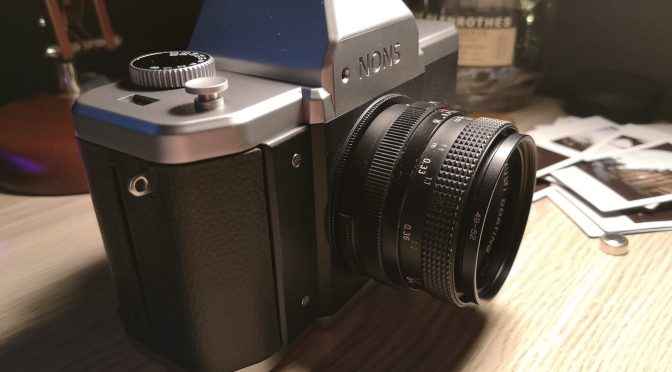
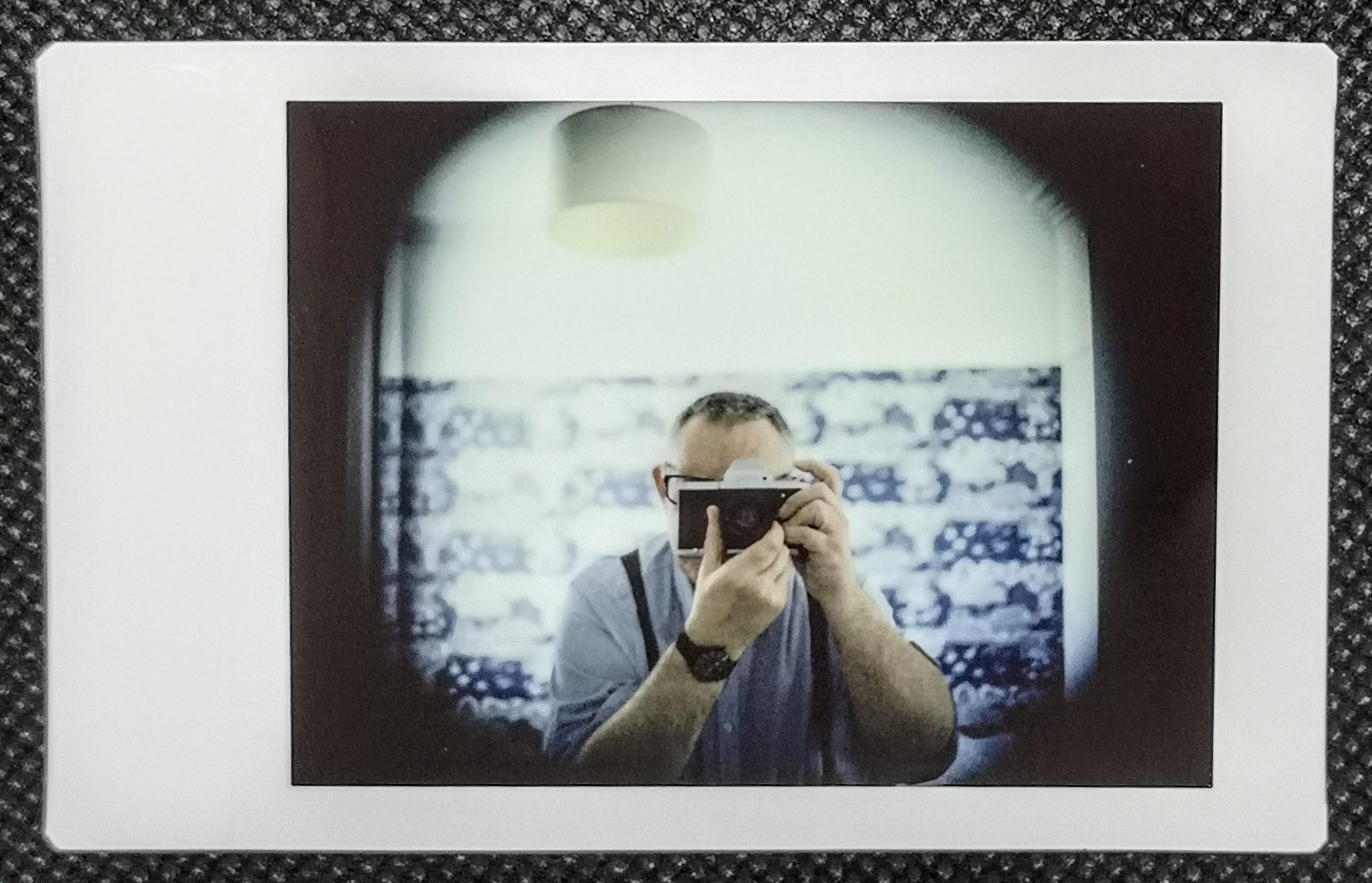
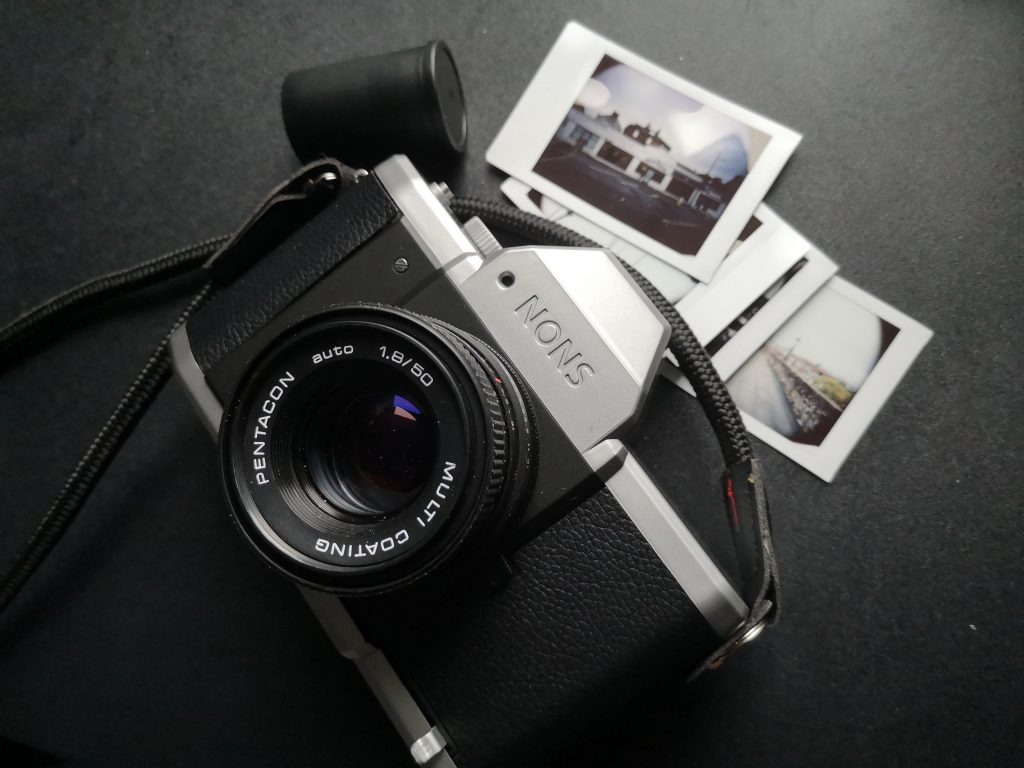
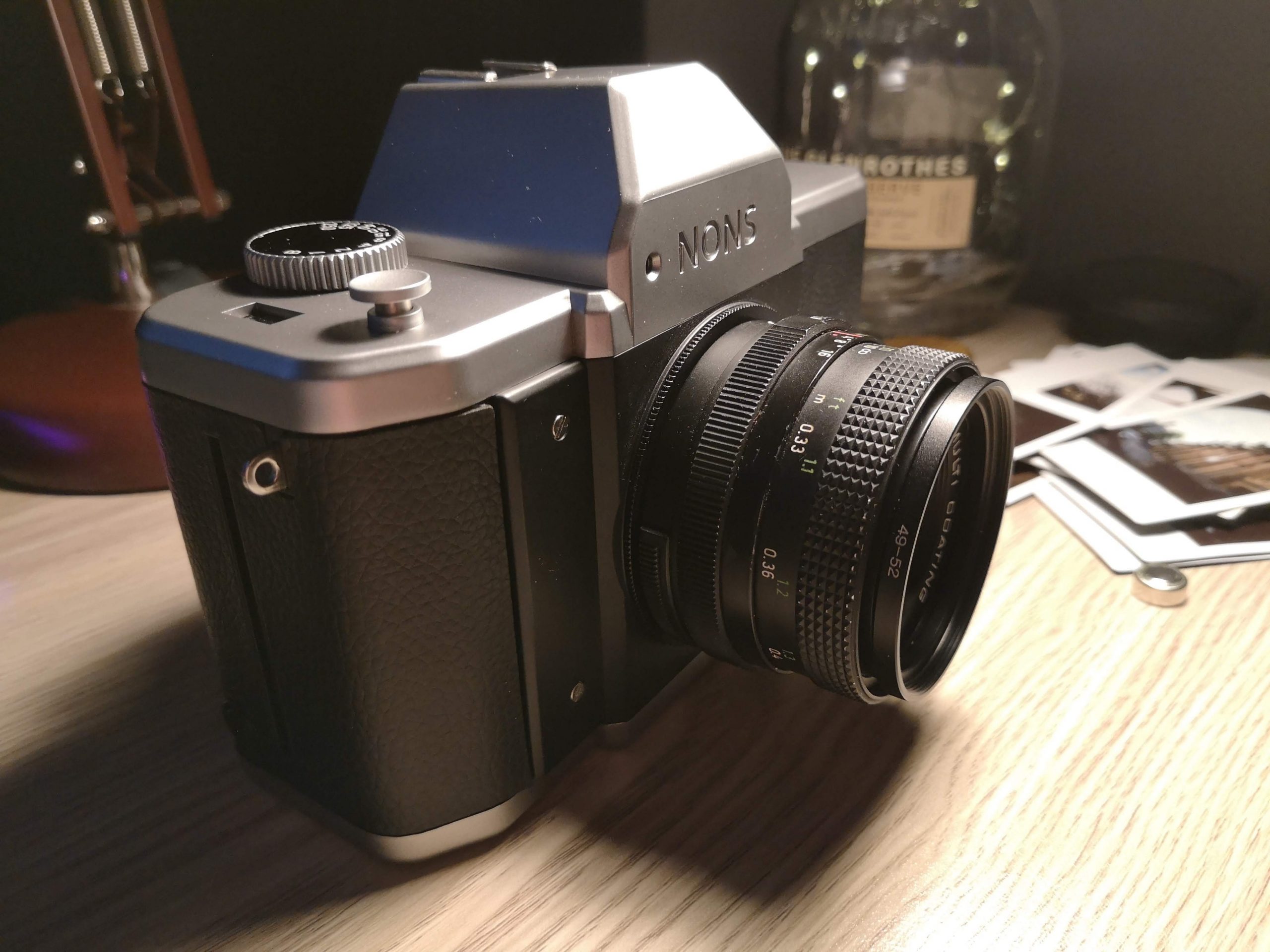
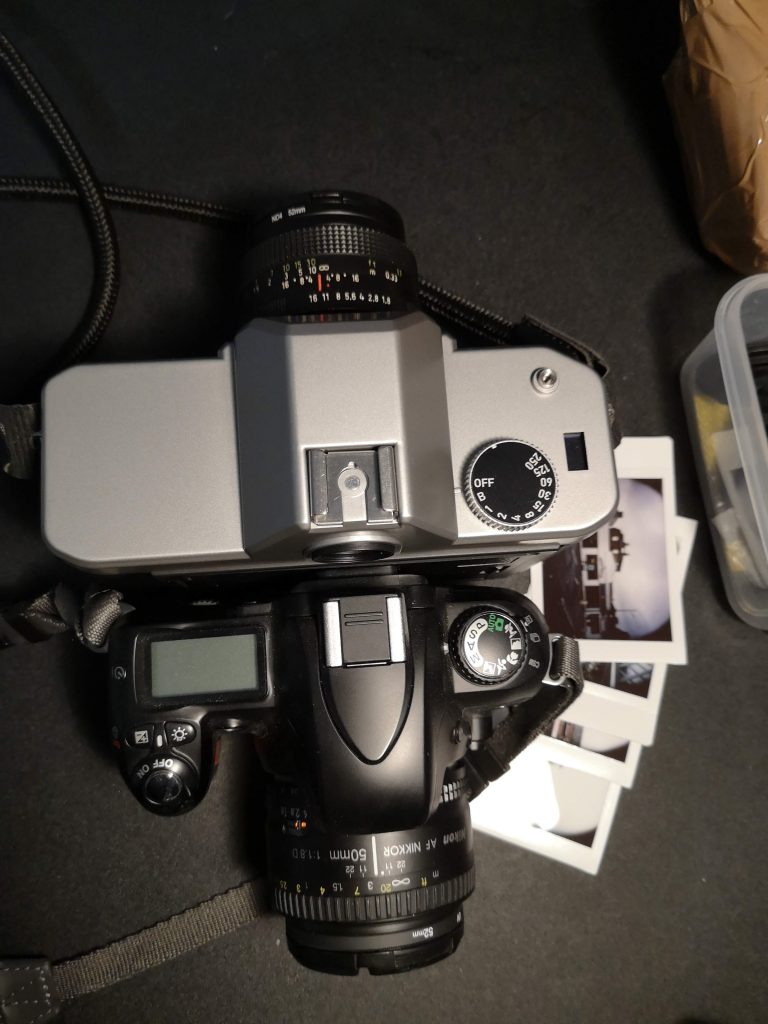


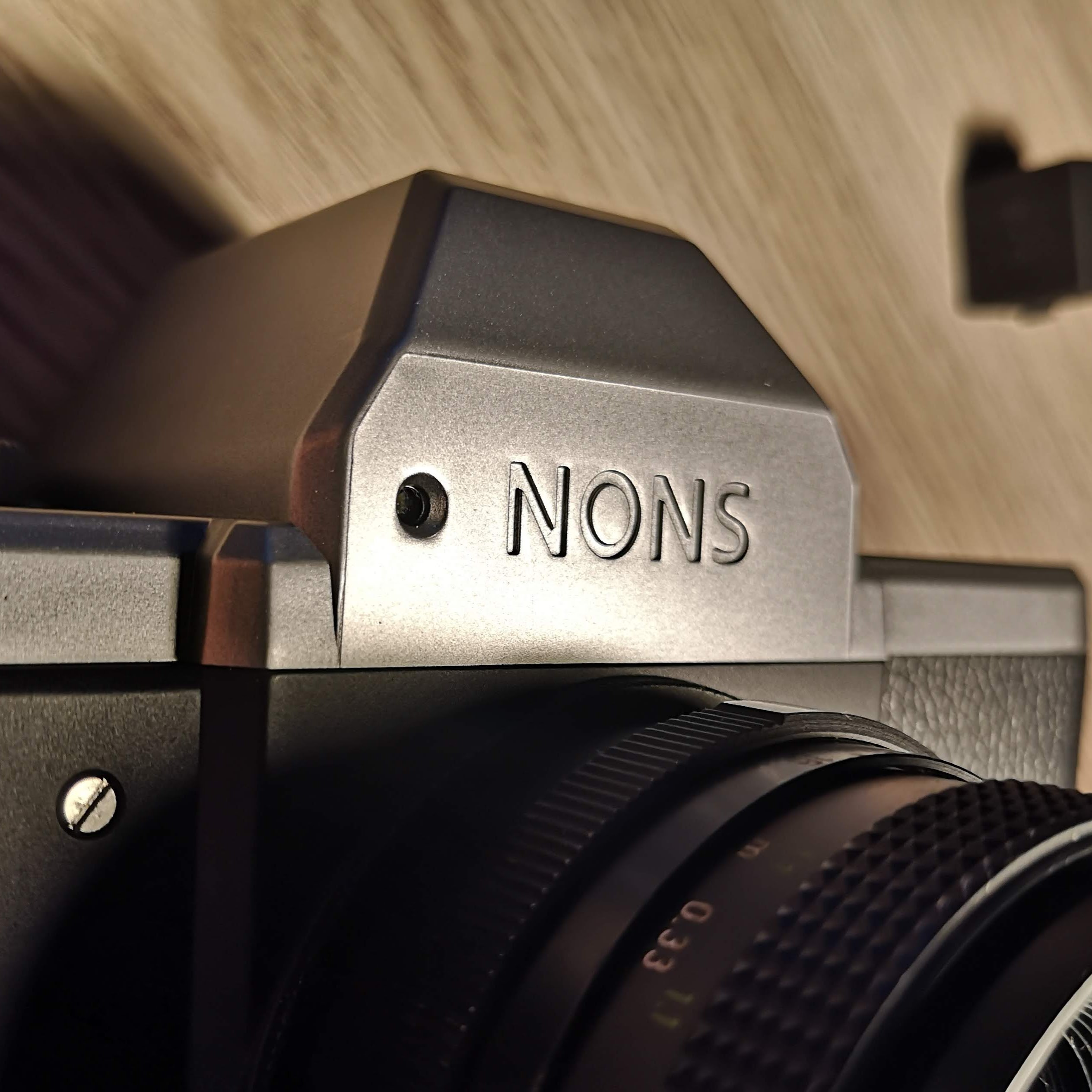

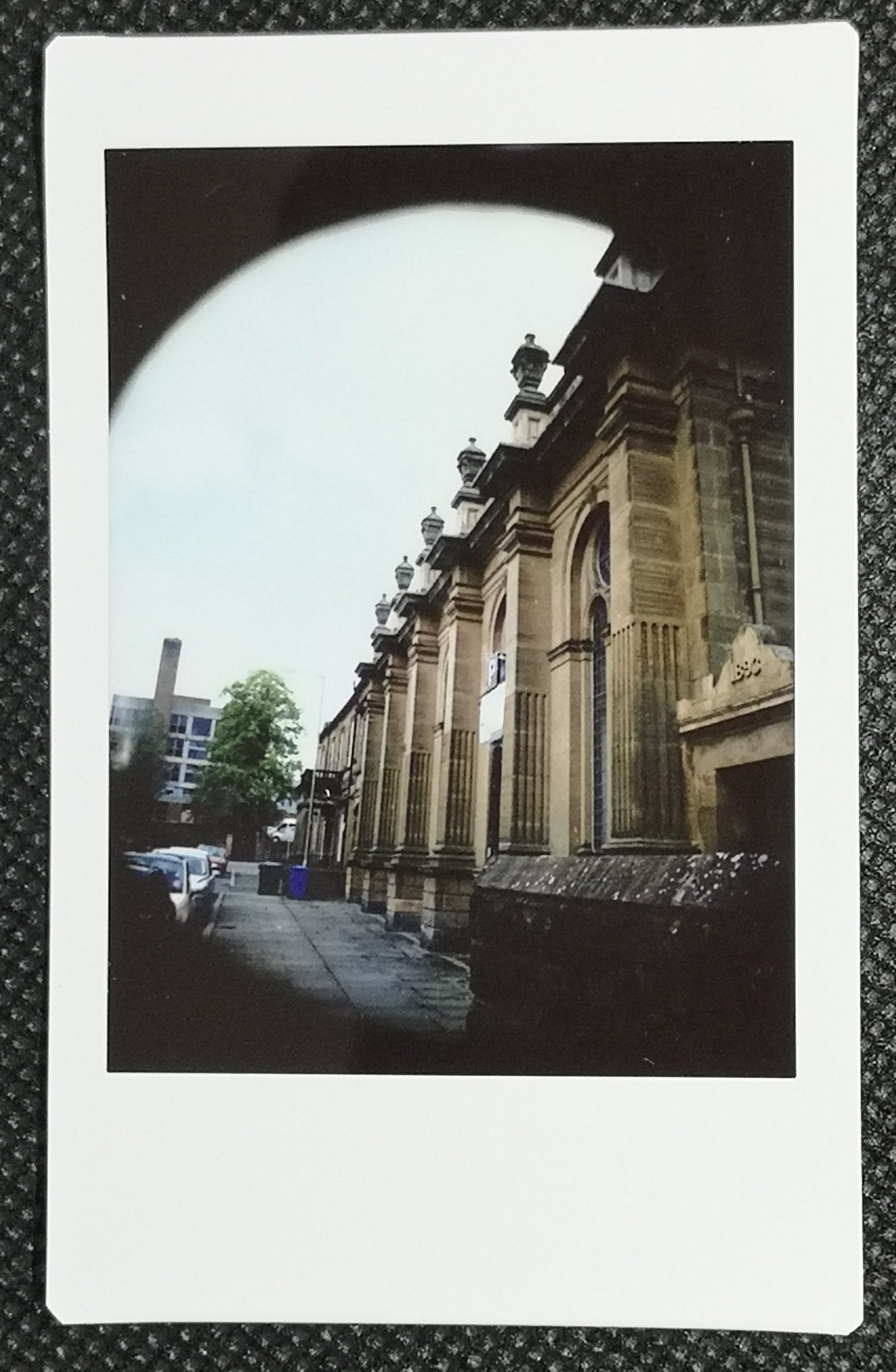
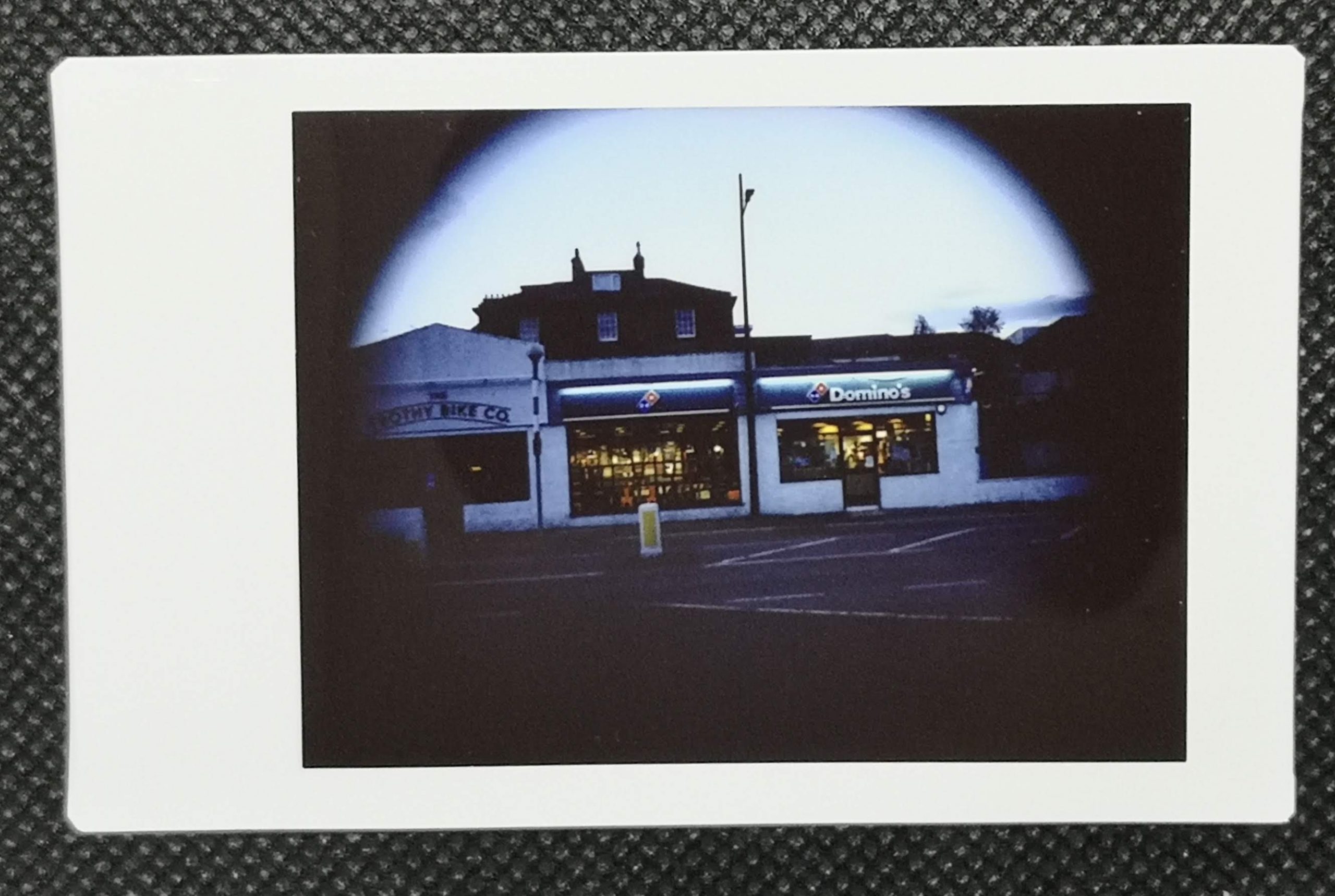
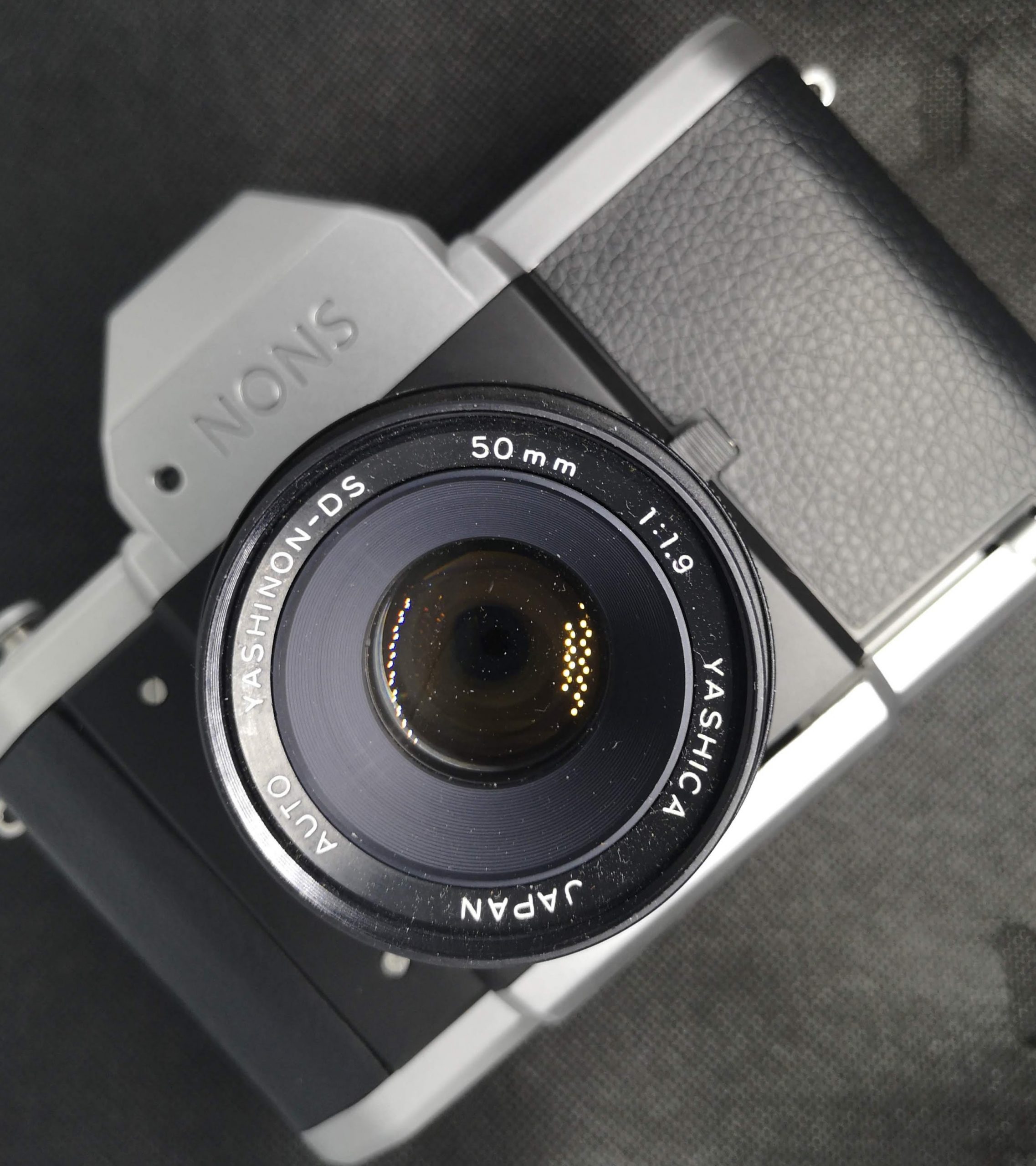
Holy crap. I’ve fallen in love. Once we get this for the instax square I’m all in. Thank for you bringing this beauty to my attention.
They already did mate. It’s called the SL660
https://austerityphoto.co.uk/is-it-hip-to-be-square-nons-sl660-first-impressions/